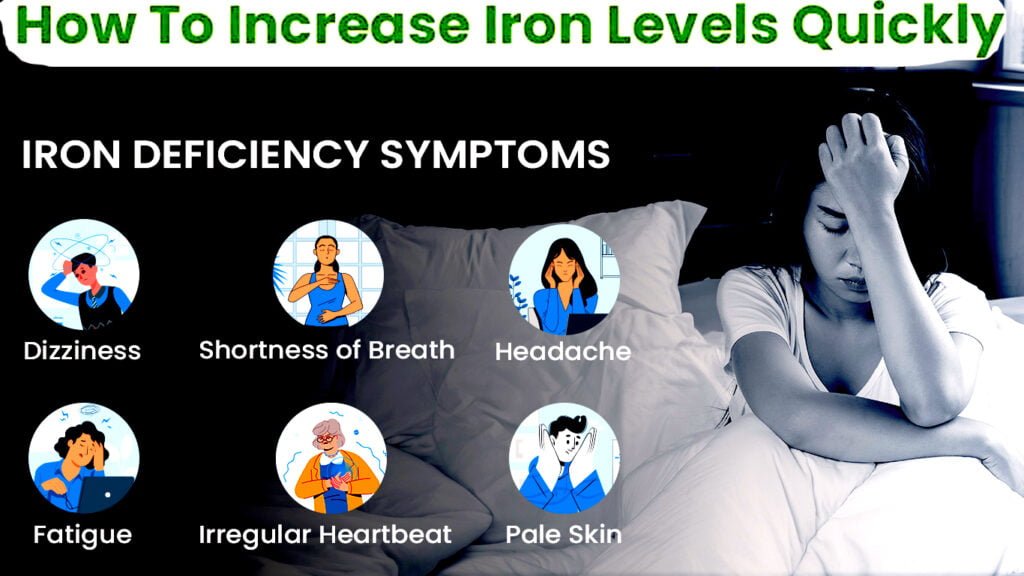Article published Sep 10, 2022 Article updated Jun 07, 2024
From: HPFY
To Increase Iron Levels – Health is our greatest wealth. Naturally, everyone wants to be healthy, and to do so, we need to follow some basic things, like exercising, eating a healthy diet, and managing stress. We all know how vitamins and minerals are essential for our health, and each one affects our body in many ways. It is important to get the right amount of nutrients daily, and one of the most important minerals needed for growth and development is iron.

Iron is a major component of hemoglobin, which provides protein to red blood cells that carry oxygen throughout the body. If your body has a low amount of iron, it will affect the production of this protein. In this article, we will learn how to increase iron levels quickly with the help of top iron-rich foods.
What Causes Iron Deficiency?
There are several reasons for iron deficiency, and it is essential to find and address the underlying condition. Some of the common causes of iron deficiency may include –
- Inadequate dietary intake: Most commonly, iron deficiency occurs due to insufficient iron in the foods we eat.
- Blood loss due to heavy periods: Heavy blood flow during menstruation for a long time can lead to depletion of iron stored by the body.
- Vitamin C deficiency: It reduces iron absorption in the body, leading to iron deficiency.
- Increased iron needs: Certain life stages, such as pregnancy, can increase the body’s iron requirement, and insufficient intake can increase the risk of low iron levels.
- Genetics: According to an article by Medical News Today, blood-related genetic abnormalities can pass from a person to their child, and in many cases, these abnormalities may cause iron deficiency anemia.
- Chronic ailments: People with gastrointestinal disorders, cancer, or chronic heart failure are more prone to iron-deficiency anemia.
- Interacting with certain medicines: According to a research paper published by the National Institute of Health, iron can interact with certain medicines, which can affect iron levels negatively.
As mentioned, iron-deficiency anemia can be an indicator of an underlying condition. It is essential to consult with your doctor and address the condition properly.
Iron Deficiency Symptoms
Iron deficiency is diagnosed with a blood test. Physical symptoms are different and can vary in men and women, but some common low iron symptoms include the following:
- Fatigue
- Pale skin
- Dizziness
- Weakness
- Headaches
- Cold feet and hands
- Irregular heartbeat
- Swelling of the tongue
- Breathing difficulties
- Chest pain during physical activity
Although some or all of these symptoms can be associated with low iron levels, other health conditions could also cause them. It is important to consult with a physician to identify the root cause.
How much iron do you need daily for iron deficiency? To Increase Iron Levels?
According to an article by the National Institutes of Health (NIH), Iron requirements can vary depending on age, gender, and life stage. This table shows recommended daily allowances (RDAs) for iron intake for different age groups and genders.
How to increase iron levels quickly
Iron levels cannot be raised overnight. Generally, it takes 2-4 weeks to increase hemoglobin and 3-7 days to increase iron. Timing also depends on age, health, dietary changes of the person, and the cause of the deficiency. Some most common ways to quickly boost iron levels in your blood are the following –
1. Add iron-rich foods to your diet
- Peas
- Eggs
- Pork
- Beans
- Raisins
- Seafood
- Apricots
- Red meat
- Tomatoes
- Dry fruits
- Dark green leafy vegetables